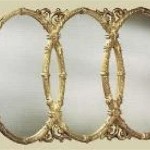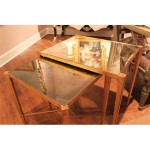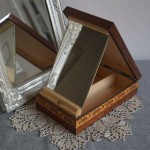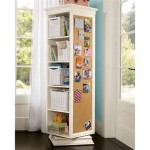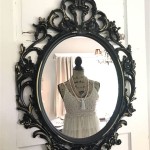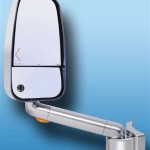Antique Mirror Furniture: Reflecting Elegance and History
Antique mirror furniture holds a unique allure, blending functionality with decorative artistry. These pieces, often adorned with intricately designed mirrored surfaces, offer a glimpse into past eras while adding a touch of glamour to contemporary interiors. From opulent dressing tables to grand armoires, antique mirror furniture represents a sophisticated investment in both aesthetics and history.
The history of mirrored furniture can be traced back to the 17th century, when the invention of plate glass made larger mirrors possible. Initially, these mirrors were expensive and considered a luxury item, primarily found in the homes of the wealthy. As mirror production techniques evolved and costs decreased, mirrored furniture became more accessible, reaching its peak popularity during the Art Deco period of the 1920s and 1930s.
Various styles and designs have characterized antique mirror furniture throughout different periods. Victorian-era pieces often featured ornate carvings and bevelled mirror panels, reflecting the era's emphasis on elaborate decoration. Art Deco designs, conversely, showcased geometric shapes and clean lines, emphasizing modernism and sleek aesthetics. Other notable styles include Baroque, Rococo, and Hollywood Regency, each contributing unique characteristics to the world of mirrored furniture.
The construction of antique mirror furniture requires skilled craftsmanship and attention to detail. Traditional methods involved meticulously attaching individual mirror pieces to a wooden frame, often using specialized glues and backing materials. The quality of the mirror itself played a significant role, with thicker, high-quality glass indicating a more valuable piece. The type of wood used for the frame also contributed to the overall value and durability of the furniture.
Identifying authentic antique mirror furniture involves careful examination of various factors. The age of the mirror is crucial, as antique mirrors often exhibit slight imperfections and distortions not found in modern manufactured glass. The backing of the mirror can also provide clues, with older pieces typically using wooden or paper backing. Examining the construction techniques and the type of wood used for the frame can further assist in authentication.
Caring for antique mirror furniture requires specific practices to preserve its delicate beauty. Dusting should be done gently with a soft, dry cloth. Avoid using harsh chemicals or abrasive cleaners, as these can damage the mirrored surfaces and the underlying frame. Excessive moisture should also be avoided, as it can cause deterioration of the wood and the mirror backing. For stubborn stains or damage, consulting a professional restorer is recommended.
The value of antique mirror furniture can vary significantly depending on several factors. Rarity plays a key role, with unique or unusual pieces commanding higher prices. The condition of the furniture is also crucial, as well preserved pieces with minimal damage are generally more valuable. Provenance, or the documented history of ownership, can further enhance the value, particularly if the piece can be traced back to a notable individual or historical event. The style and period of the furniture also influence its value, with certain styles, such as Art Deco, being particularly sought after by collectors.
Collecting antique mirror furniture offers a rewarding experience, allowing individuals to surround themselves with pieces of history and artistry. Building a collection can be approached strategically, focusing on specific styles, periods, or types of furniture. Researching and understanding the market is crucial for making informed purchasing decisions. Reputable antique dealers and auction houses can provide valuable resources and expertise for collectors.
Incorporating antique mirror furniture into modern interiors can add a touch of elegance and sophistication. A mirrored dressing table can bring a glamorous feel to a bedroom, while a mirrored console table can create a focal point in a living room. Mirrored furniture can also enhance the perception of space, making smaller rooms appear larger and brighter. Balancing antique pieces with contemporary furnishings can create a visually appealing and dynamic interior design scheme.
The enduring appeal of antique mirror furniture lies in its ability to transcend time and trends. These pieces offer not only functional storage and decorative elements but also a connection to the past. The reflective surfaces capture and amplify light, creating a sense of depth and dimension within a space. Whether used as a statement piece or a subtle accent, antique mirror furniture continues to captivate with its timeless beauty and historical significance.
The market for antique mirror furniture remains active, with collectors and enthusiasts continually seeking out these exquisite pieces. Online marketplaces, antique shops, and auction houses offer avenues for acquiring antique mirror furniture. Understanding the market trends and conducting thorough research is essential for making informed purchases and securing authentic pieces.

Dimensional Antiqued Mirror Coffee Table Mirrored Tables Antique Colorful Furniture

Antiqued Mirror Chest Currey Company

French Mirror Baroque Rococo Antique

Gold Antique Mirrored Bedside Cleopatra Range Flora Furniture

Antique Mirrored Furniture Eclectic Entrance Foyer Sara Tuttle Interiors

Antique Makeup Vanity Dresser Mirror

Antique Console Table With Mirror In Optional Furniture From China Home Factory Made Com

Vintage Mirror 2 Left In Stock Refinished Gold Leaf

Decorating With Mirrored Furniture Decor Home

Furniture Of America Loraine Mirror

